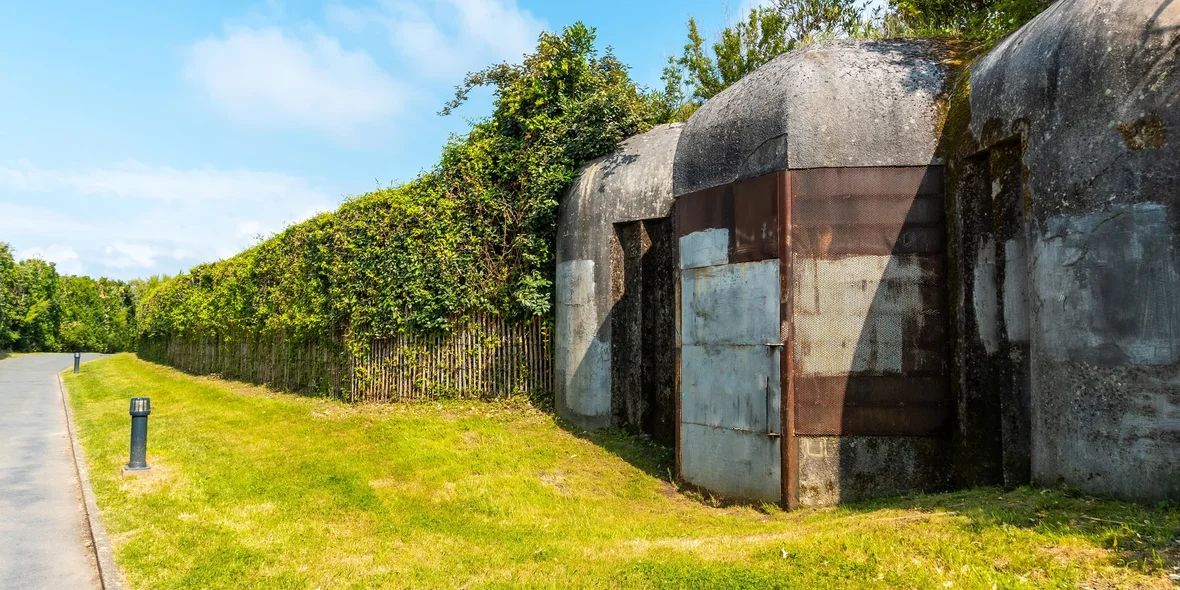
Private Bunkers, or Silos: From Underground to Modular — a Complete Overview
The term “bunker”, or “silo” is widely used in military vocabulary as a designation of a fortified structure for defense on the surface (DOTs, DZOTs) or under the surface (bomb shelters) of the earth. Bunkers in real estate are synonymous with bomb shelters and are fortified rooms in the basement of a building. Private protective structures outside apartment buildings and private residences are also classified as shelters.
The construction of shelters and underground bunkers was practiced during the Cold War in many countries around the world, particularly in the United States, Europe, and the USSR. Unlike the first two, in the Soviet Union, the construction of shelters was a mandatory requirement when building residential buildings and planning neighborhoods.
Now such facilities are most often a private initiative. For example, in 2023, the developer Intellect Capital Development presented a residential complex in St. Petersburg with a bomb shelter. The bunker is built into the infrastructure of the complex, camouflaged and equipped with autonomous air filtration and water purification systems.
The tasks of the bunker/shelter:
- Protection from external threats (bombings, radiation, natural disasters, invasions).
- To ensure the survival of its occupants for extended periods of time in an autonomous mode.
Types of bunkers:
- Underground shelters under the house. Such shelters before the construction of the house and are part of the foundation of future housing. Most often, under it, dig a pit several stories deep, then form a concrete monolith, on top of which the house is already erected. In the resulting space, a shelter/bunker with rooms of different functionality (shower room, generator room, bedroom, storage) is arranged. In 2023 on Cian sold a house in the Moscow region for 40 million rubles. In the description, a 60 m² bunker with a water supply, a generator, and a place for a wine cellar.
- Modular bunkers. Created on the territory of the manufacturer’s construction, which, after purchase, is brought to the site and buried underground. Modularity means that there is a self-sufficient base to which modules with additional features can be added. For example, the basic variant is a small structure with provisions storage. For an additional fee, you can add to it a module with a shower, generator room, etc.
- Remodeled military facilities. Old missile silos or shelters that are converted to housing. For example, in the USA Larry Hall made a Survival Condo complex out of a missile silo in Kansas. There is a swimming pool, a gym, and even a farm for vegetables. The price for an apartment in such a bunker starts at $1 million.
- Safe rooms. Not exactly a full-fledged bunker, but rather a fortified room in the house in which a person can protect himself from unforeseen conditions. For example, in Israel, every new apartment has a “mamad” — a room with an armored door and windows, in which you can survive a shelling.
Modern bunkers/shelters
During the Cold War, the safety of a bunker was determined by its depth below the surface of the earth and the thickness of its concrete walls. Comfort took third place, as the main goal was survival. Modern defense structures are built according to slightly different principles:
- Modern materials. Walls made of reinforced concrete or steel that can withstand a blast wave or complete collapse of the building. Doors — airtight, as in a bank vault, to keep out gas or water.
- Complete life support. Ventilation systems are equipped with filters to ensure a supply of clean air even in conditions of chemical or radioactive contamination. Stand-alone generators provide power to the bunker systems (refrigeration, waste processing).
- Acceptable sizes. From a small room of 5-10 m² (enough for a couple of people) to entire underground apartments of 100 m² with kitchen and bedrooms.
In Russia, the Spetsgeostroy company makes bunkers that look like an ordinary shed from the outside, but inside, it is a full-fledged shelter with food supplies for a month and air filters. In the U. S., bunkers are not exotic, but a full-fledged business. Vivos companies sell bunker spaces for $35,000-$200,000, and demand is growing because of fears of climate disasters and wars. In New Zealand, bunkers are being built for rich foreigners in case of an apocalypse with Jacuzzis and a library for $500,000—$2 million.







